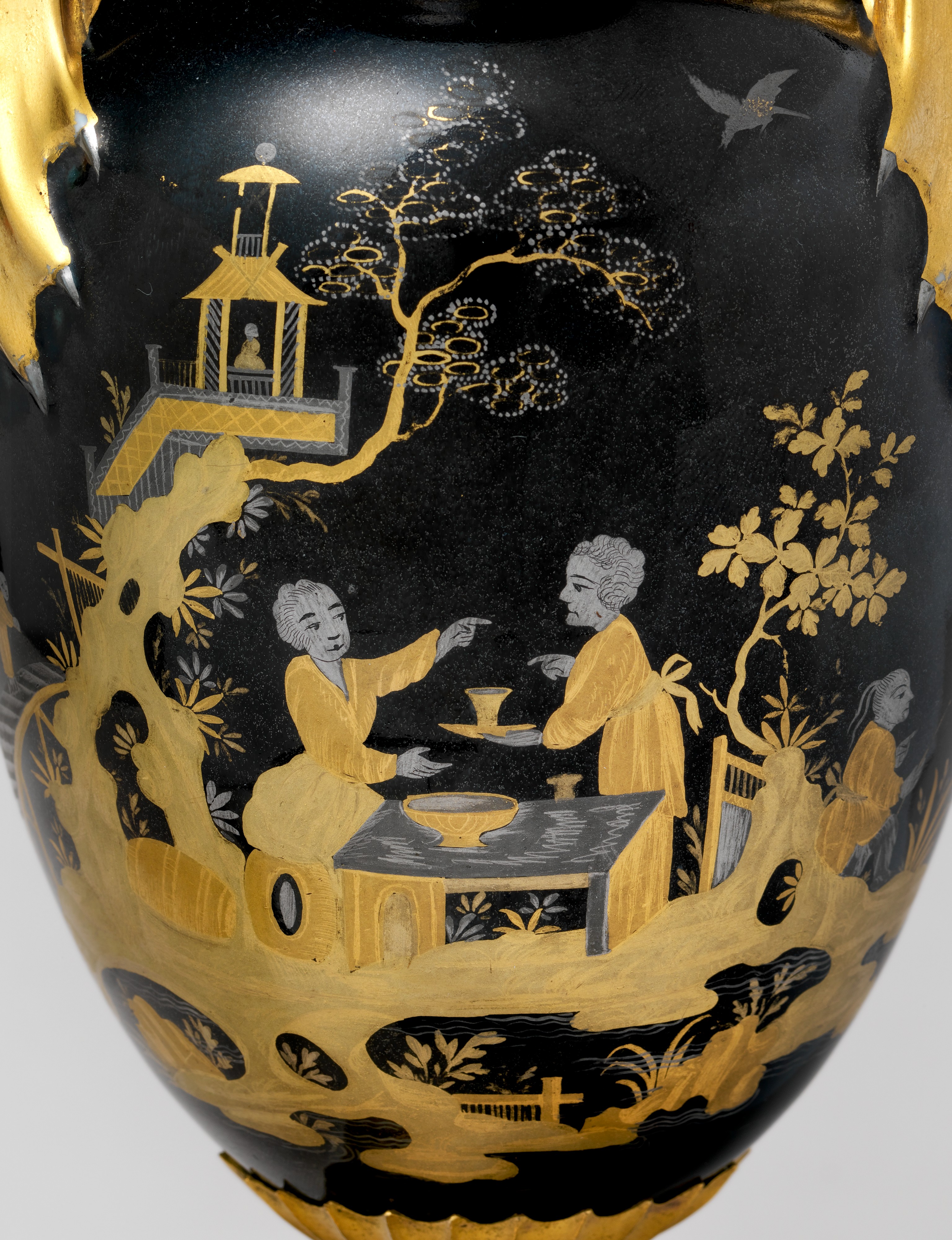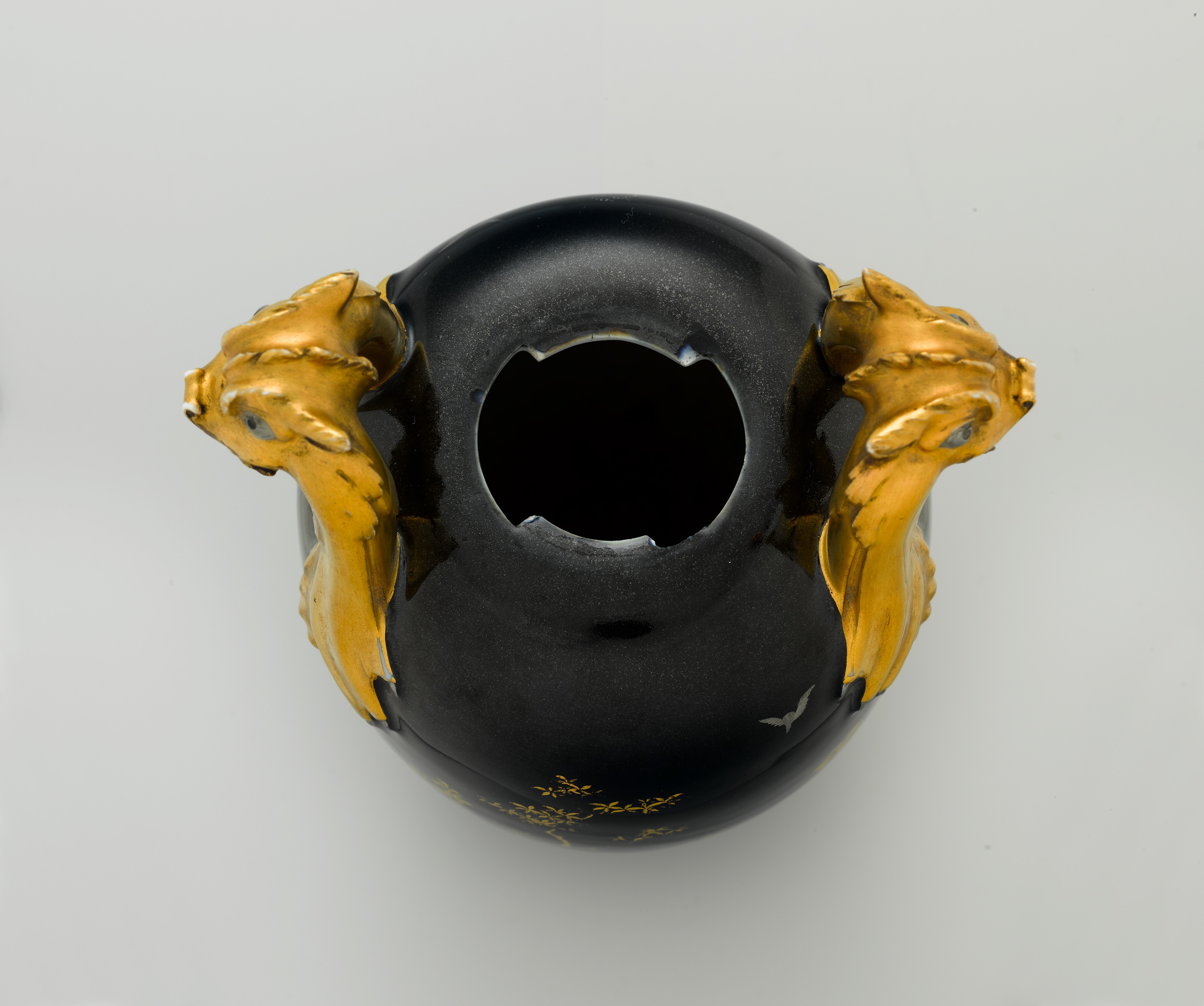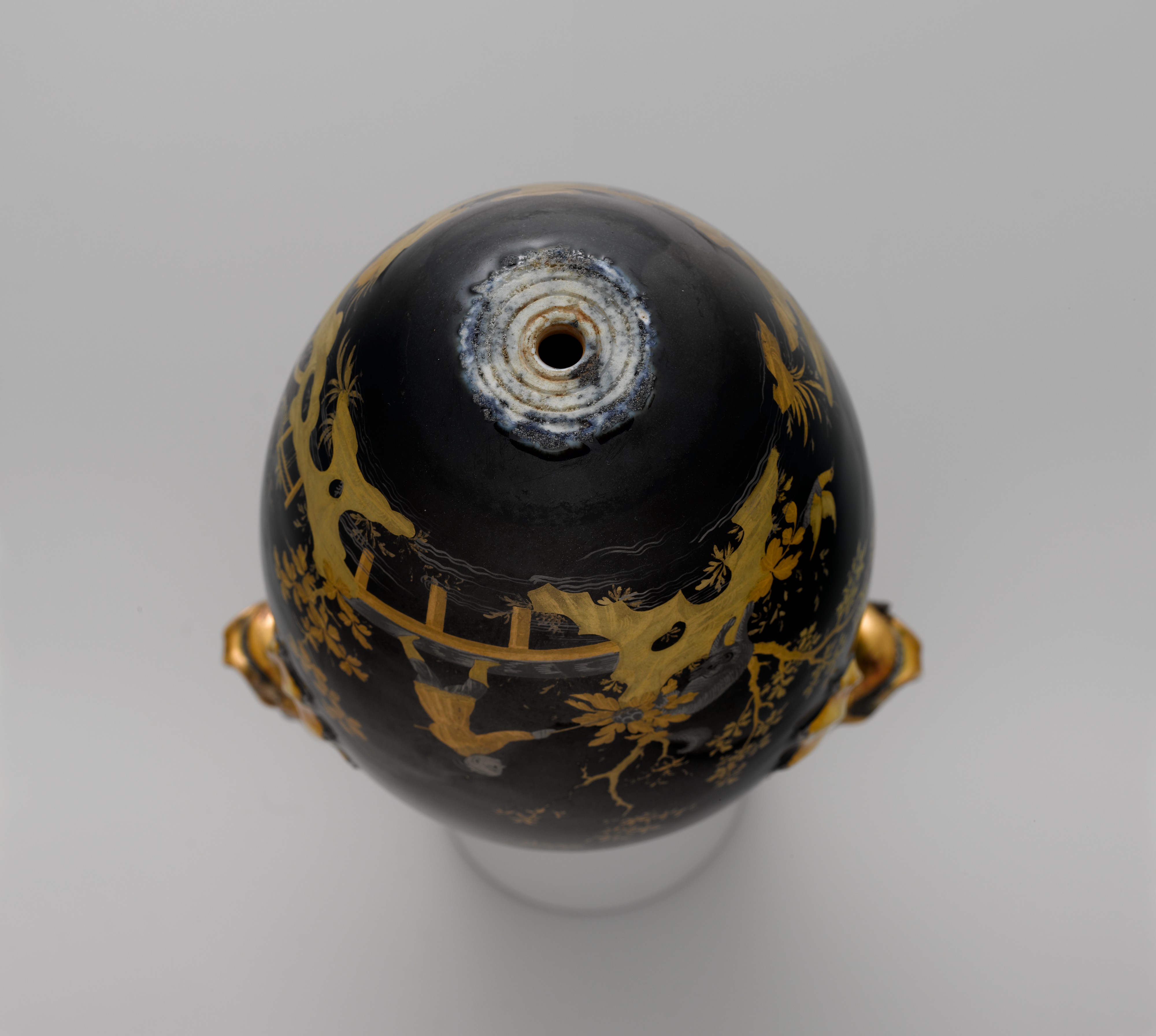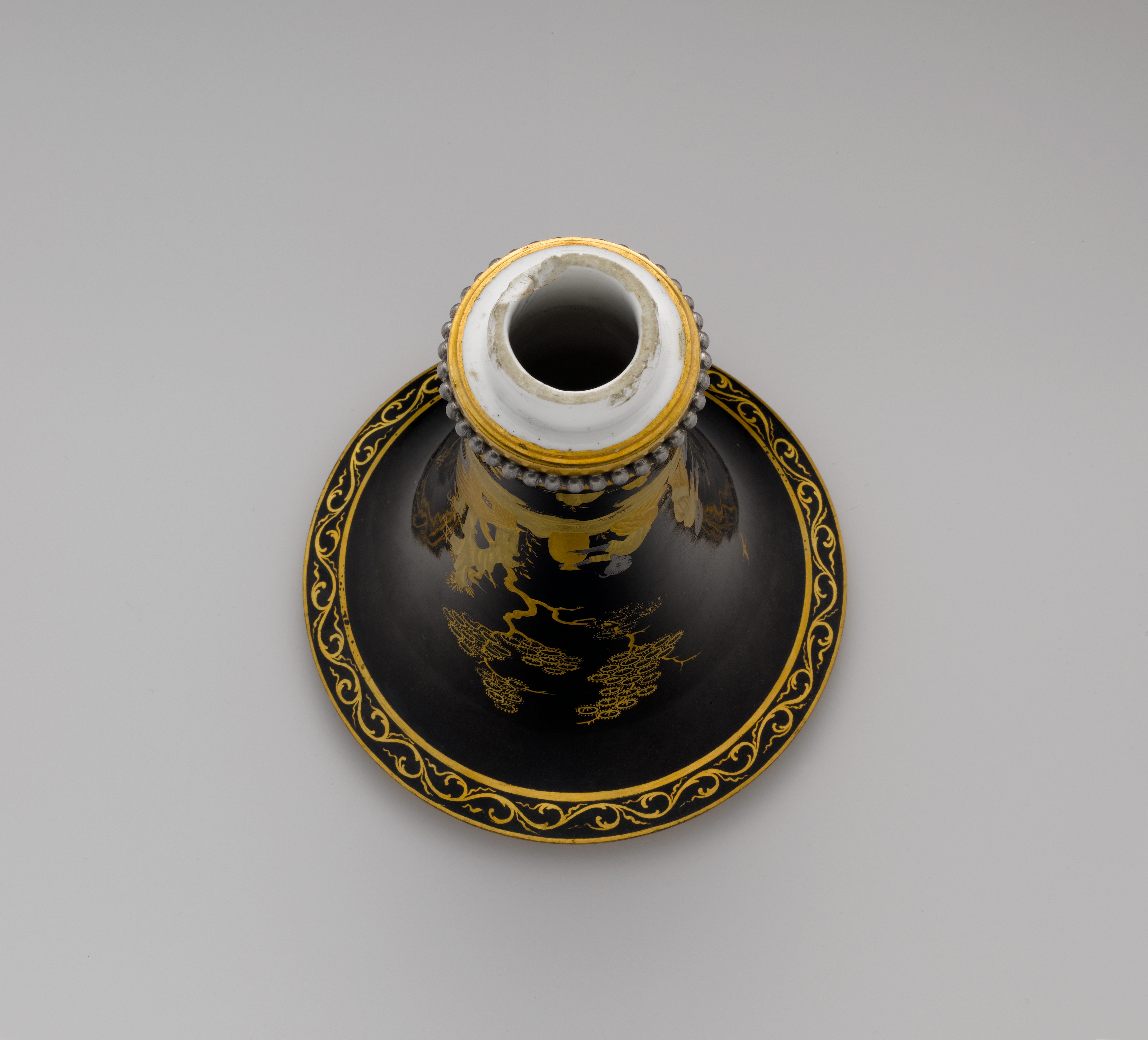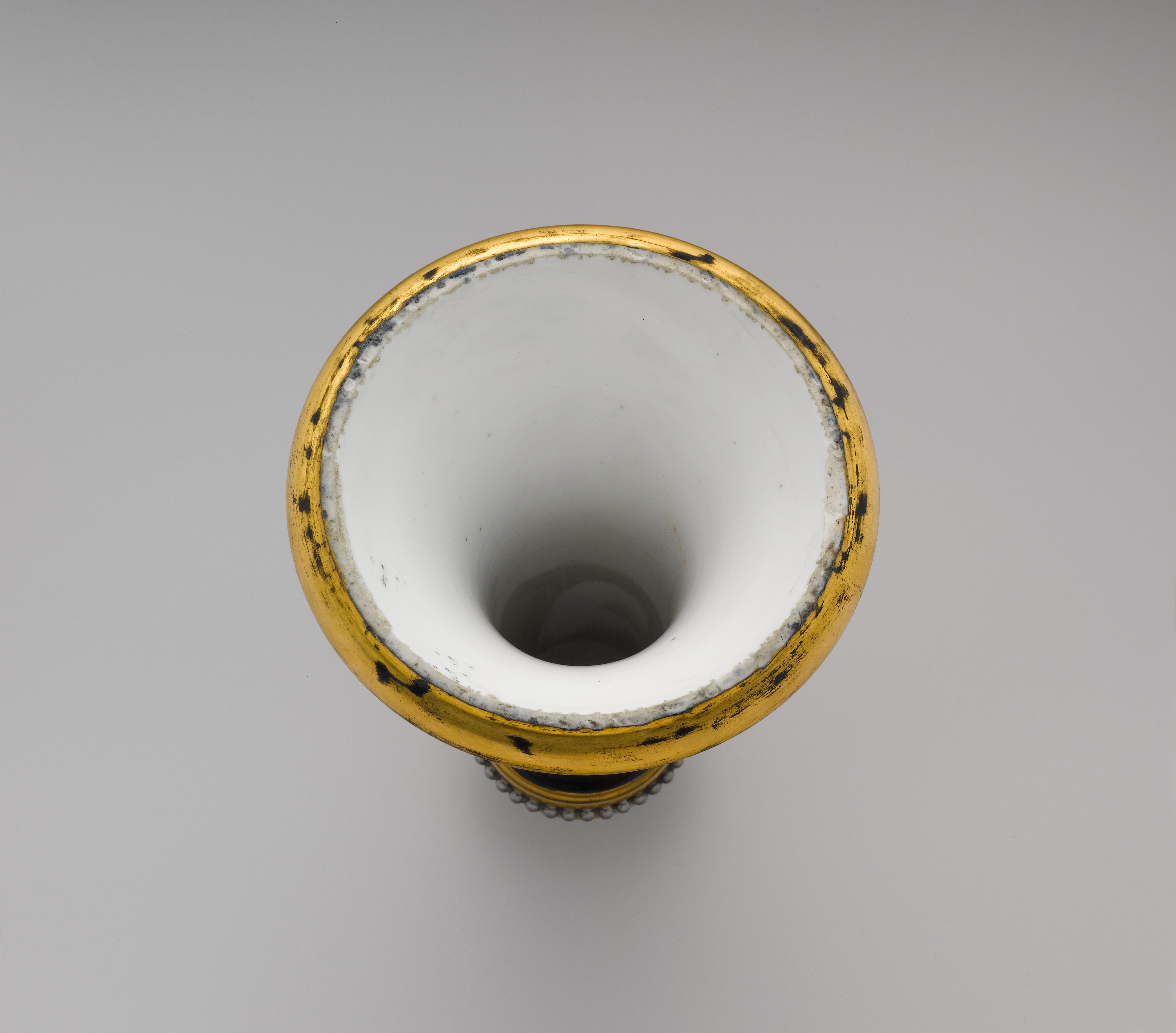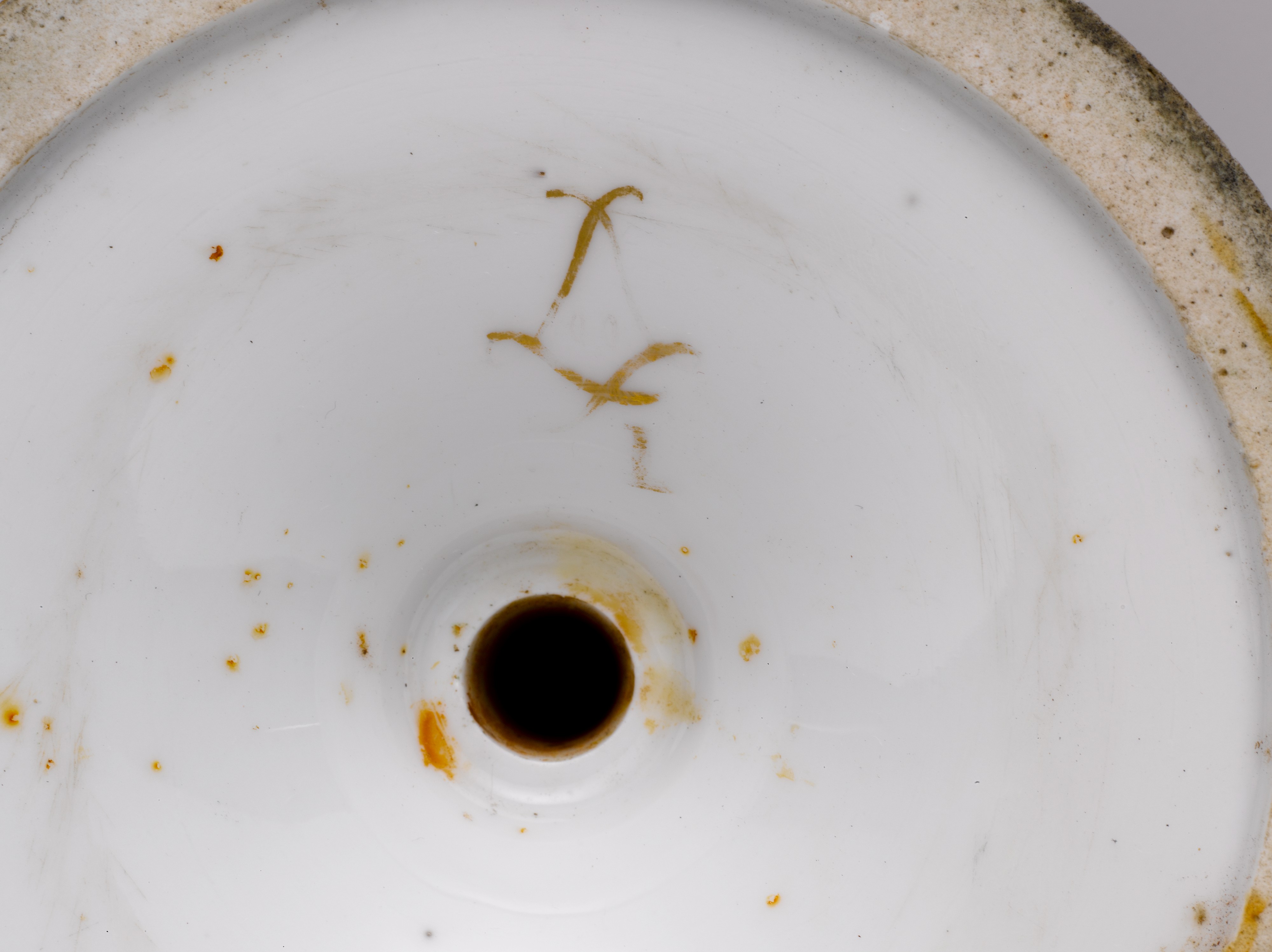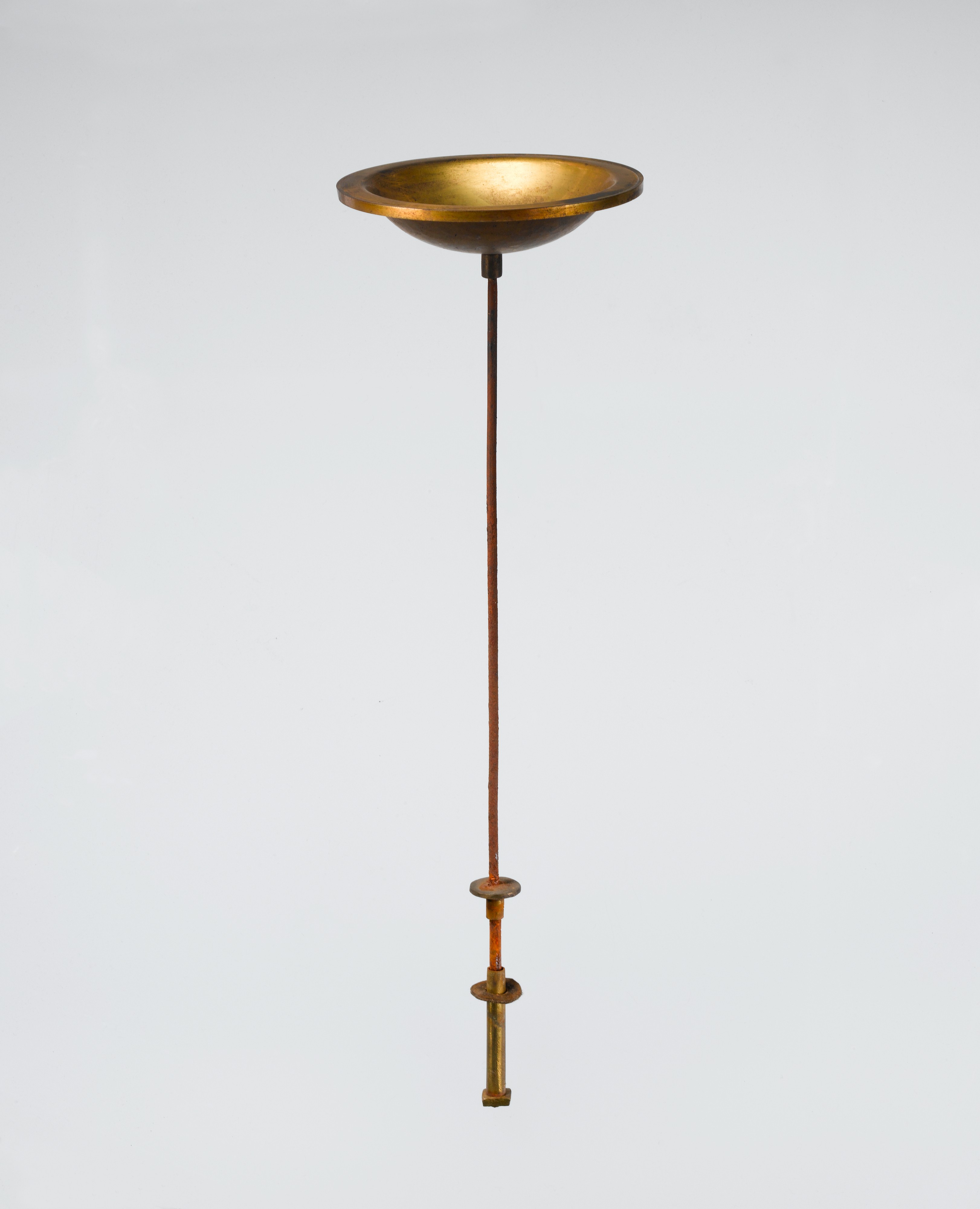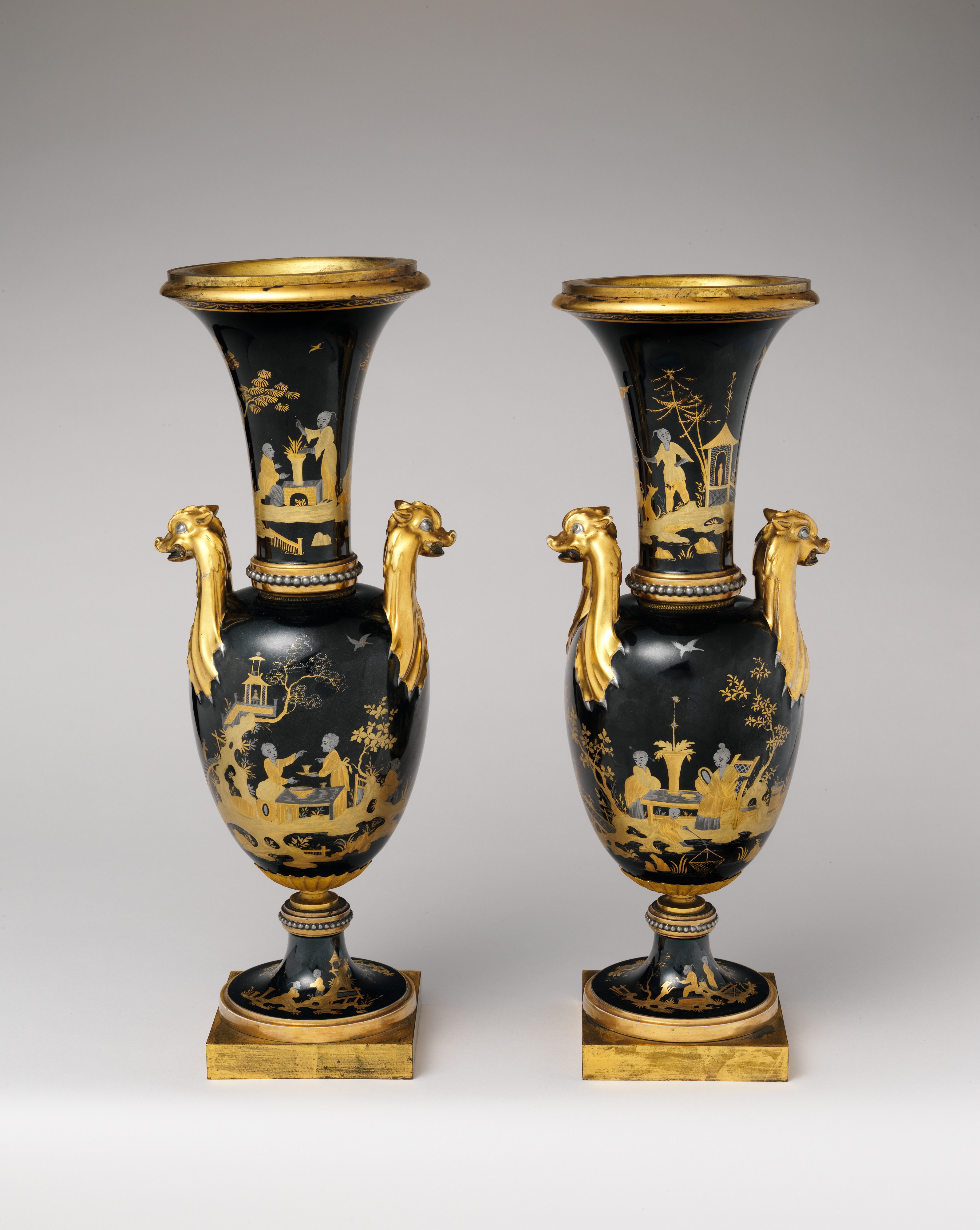Vase (vase chinois) (one of a pair)
Manufactory Sèvres Manufactory French
Decorator Louis-François L'Écot
Fashions changed quickly in France during the eighteenth century, but the taste for decoration in the Chinese style and for black lacquer never waned. This pair of vases, which dates from the last decade of the century, reflects a model known at the Sèvres factory as vase chinois, and the handles in the form of the head of a fantastic beast allude to the exoticism then associated with China. The decoration, executed in platinum and two tones of gold, evokes Chinese landscapes in the depiction of craggy rocks, twisting tree branches, and pagodas, and the dress and hairstyles of the figures are clearly intended to suggest Asians. The gold chinoiserie scenes on a black ground are the porcelain equivalent of Japanese black lacquer. The taste for “black lacquer porcelain” coincided with the popularity at the French court of furniture mounted with panels of Japanese lacquer.
It is likely that this pair of vases was owned by Louis XVI. The factory archives record that two vases chinois were purchased by the king at the sale of Sèvres porcelain held at Versailles from late December 1791 to mid-January 1792. Their sale price of 1,920 livres is consistent with the lavishness of the decoration seen on this pair.
Due to rights restrictions, this image cannot be enlarged, viewed at full screen, or downloaded.
This artwork is meant to be viewed from right to left. Scroll left to view more.


